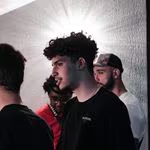How to Send Beats to Artists: The Ultimate Guide 2026
Why sending beats?
In the beatmaking world, there are two big ways of selling beats: leasing on BeatStars and direct placements by emails. Email placements can be more work, but they are usually required when collaborating with bigger artists as they'll demand privacy and a strict exclusivity over the beats that they choose.
As a music producer, your goal is to get the right beats in front of these artists so they can turn them into hit songs.
Whether you're aiming to collaborate with rising talent or connect with established names, learning how to professionally and effectively send your beats can significantly improve your chances of securing placements. That's what we'll be focusing on in this guide.
1. Prepare Your Beats for Submission
Before you start reaching out, it's crucial to make sure your beats are polished and ready to impress. Artists are looking for high-quality, fully mixed and mastered productions - they don't have the time or patience to work with unfinished beats.
Take the time to carefully refine your beats, paying close attention to the mix, levels, and overall sonic quality. Avoid sending anything that isn't 100% ready to go. Remember, you only get one chance to make a first impression.
Also, ensure that your beats are labeled properly. Use a consistent format for file names, such as:
Beat name - BPM - (KEY) - Beatmakers as such : (BRULURE - 140BPM @Bankaimusic @Kimo)
You can add the key if you have it but I see it as optional because for the mixing engineer, it's pretty simple to figure it out.
So artists can easily organize and remember your work. Consistency goes a long way in helping you stand out.
2. Create a Beat Pack
Instead of sending a single beat, put together a "beat pack" - a collection of your strongest, most relevant productions. Typically, beat packs range from 3-5 tracks in the style of the artist you are approaching, which provides the artist with options to choose from without overwhelming them.
When doing your beat pack, be strategic. Tailor the selection to the artist's sound and genre. When you are reaching out to a rapper, make sure the BPM, vibes, and overall style of the beats align with their existing catalog or take a risk with an emerging style they have never done before (one of the five in the beat pack). The more closely your beats match their style, the better your chances of piquing their interest.
Also, avoid simply sending a random assortment. Take the time to sequence the beat pack in a way that tells a story and showcases the breadth of your production skills. You want the artist to feel like they're listening to a cohesive, carefully curated collection rather than a random dump of files.
3. Personalize Your Approach
Don't just fire off a generic email with some MP3s attached. Take the time to craft a personalized message that speaks directly to the artist you're reaching out to.
Send mp3 only, below the Google drive limit, otherwise artists will not listen to your beat, you want them to have the simplest way to listen to it. Any links for beats are forbidden unless a dropbox or any catalog like in the example down there.
Now, I know some of you might be wondering why use Gmail attachments rather than BeatStars links. Well, the main advantage of attachments is that your beats will be directly accessible within the email, without the artist needing to click on a link. This makes things much more straightforward and increases the likelihood that they'll actually listen to your productions. With a BeatStars link, there's always a risk of the email getting lost in the recipient's inbox.
Start by introducing yourself briefly and explaining why you think your beats would be a good fit for their style. Mention any relevant accomplishments, collaborations, or placements that lend credibility to your pitch. But keep it concise - artists receive countless messages daily, so you need to make a strong impression quickly.
It's also helpful to include links to your online presence, such as your beat store, social media profiles, or streaming platforms where the artist can check out more of your work. A clean, professional email signature with all your contact info makes it easy for them to reach out.
[Your Name]
Music Producer | Beatmaker
🎵: [Your Placements]
📱: [Your Phone Number]
🌐: [Your Beat Store Link](or dropbox if you have one)
4. Follow Up Consistently (But Avoid Spam)
Don't get discouraged if you don't hear back right away. Artists' inboxes are busy, and your initial message may have gotten lost in the shuffle. The key is to follow up regularly without being overly aggressive.
Aim to send a new beat pack every week, but no more than that, you want them to see you frequently but not in a spammy way, you want them to notice you by your consistency. Overwhelming artists with a flow of emails is a sure way to get ignored. Instead, focus on quality over quantity. Each time you reach out, make sure you're providing fresh, relevant beats that align with their current sound and needs.
When following up, reiterate why you think your beats would be a good fit, but avoid simply reiterating the same pitch. Try to provide new context, such as recent placements, accolades, or creative inspiration behind the beats. This helps keep your outreach feeling fresh and meaningful.
5. Be Patient and Professional
Building relationships in the music industry takes time and persistence. Even if you don't receive an immediate response, keep your cool and remain professional.
Avoid getting frustrated. Instead, keep perfecting your craft, expanding your network, and looking for new opportunities to get your beats heard. The more you can demonstrate your dedication, talent, and ability to roll with the punches, the more likely you'll be to catch an artist's attention.
Remember, the music business is called business for a reason. Do not take things personally, it operates on its own timeline. Stay patient, keep your cool, and trust that if your beats are truly great, you'll eventually find the right artists to collaborate with.
Conclusion
Getting your beats in the hands of artists is a crucial step in gaining traction as a producer. By following these guidelines - preparing your beats, curating compelling beat packs, personalizing your outreach, following up consistently but avoiding spam, and maintaining patience and professionalism - you'll position yourself for the best possible chances of success.
The music industry can be challenging to break into, but with the right approach, you can steadily build momentum and make meaningful connections. Stay focused, keep refining your craft, and remain dedicated to sharing your beats with the world. Before long, you may find your productions gracing the charts and airwaves.
 Producerfury
ProducerfuryUpload your catalog
Tag your beats. Make loop packs.
Import your contacts
Build lists. Search IG and collect emails.
Send emails on autopilot
Smart targeting. Auto-picked attachments.
Loved by 2640 producers
 TapDaddyBeats1M+ Streams
TapDaddyBeats1M+ Streams Churass MusicMulti-platinum Publisher
Churass MusicMulti-platinum Publisher BE-TWIIN Beats50M+ Streams, 1000+ Artists
BE-TWIIN Beats50M+ Streams, 1000+ Artists Prodbymeadow1K+ Syncs, 15M+ Streams
Prodbymeadow1K+ Syncs, 15M+ Streams Royal808Platinum Producer
Royal808Platinum Producer fizzo4911M+ Streams
fizzo4911M+ Streams LLoke Made3x Billboard Charting
LLoke Made3x Billboard Charting SIGHOST8M+ BeatStars Plays
SIGHOST8M+ BeatStars Plays LitKidBeats18M+ YouTube Views
LitKidBeats18M+ YouTube Views

